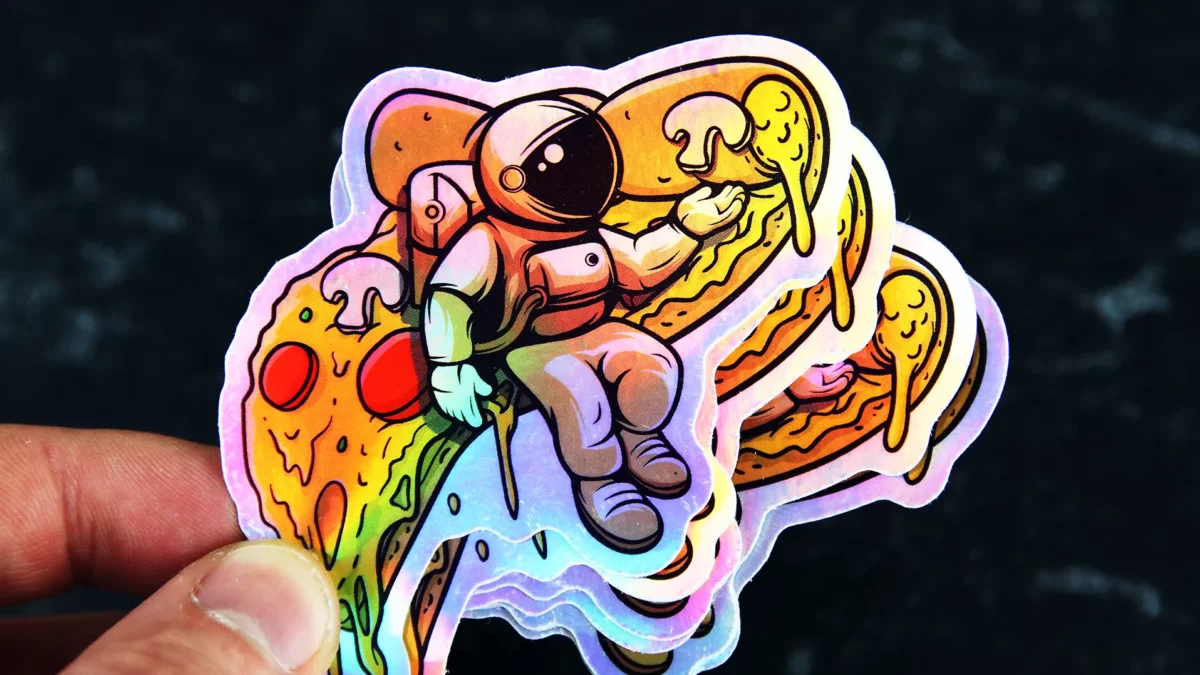In today’s visually captivating world, where aesthetics and innovation merge seamlessly, holographic stickers have emerged as an enchanting phenomenon. These eye-catching creations have taken the art of stickers to a whole new level, transcending conventional designs and engaging our senses in a mesmerizing dance of light and color. This article delves deep into the captivating realm of holographic stickers, exploring their history, technology, applications, and impact on various industries.
A Glimpse into History
The roots of holography, the science behind holographic stickers, can be traced back to the mid-20th century. Hungarian-British physicist Dennis Gabor laid the foundation for holography when he introduced the concept of the hologram in 1947. However, it wasn’t until the invention of the laser that practical holographic techniques began to emerge. The breakthrough came in the early 1960s when American physicist Emmett Leith and his student Juris Upatnieks created the first practical hologram using laser light.
Initially, holography was primarily a scientific endeavor, fascinating researchers and artists alike with its ability to capture three-dimensional images. However, it didn’t take long for its applications to extend beyond the laboratory and into the commercial world, leading to the birth of holographic stickers.
The Technology Behind the Magic
At its core, a holographic sticker is a photographic recording of a light field, capturing both the intensity and phase of light. Unlike traditional photographs that record only the intensity of light, holograms record the full information about the light waves, allowing them to recreate a three-dimensional image when illuminated by coherent light sources such as lasers.
The process of creating holographic stickers involves several intricate steps:
Recording: A hologram is created by splitting a laser beam into two parts: the object beam and the reference beam. The object beam reflects off the subject (the item to be holographed) and interacts with the reference beam. This interaction forms an interference pattern, which is captured on a photosensitive material, such as holographic film or glass.
Developing: The exposed holographic material undergoes chemical processing to reveal the recorded interference pattern. This process brings out the latent image and creates a relief pattern on the material.
Copying: The developed hologram serves as a master, which can be used to create multiple copies of the original holographic image. These copies are what we commonly see as holographic stickers.
Dazzling Applications
The allure of holographic stickers lies in their ability to transform ordinary surfaces into captivating displays of light and color. These stickers find applications across various industries, bringing innovation and uniqueness to each.
- Security and Authentication:
Holographic stickers are widely employed in security and authentication measures. They add another layer of protection to products, documents, and identification cards. The intricate and complex nature of holograms makes them extremely difficult to replicate, acting as a deterrent against counterfeiting.
- Branding and Marketing:
Brands utilize holographic stickers to create visually striking labels, packaging, and promotional materials. The dynamic and ever-changing play of light in holographic stickers captures attention, making products stand out on store shelves and leaving a memorable impression on consumers.
- Art and Design:
Holographic stickers have inspired artists and designers to explore new dimensions of creativity. The interplay of light and color in holograms offers a unique canvas for artistic expression, resulting in captivating installations and pieces that engage viewers in a captivating sensory experience.
- Entertainment and Collectibles:
Holographic stickers have made their mark in the world of entertainment and collectibles. They are often featured on trading cards, posters, and merchandise related to popular movies, music, and sports, adding a touch of magic and exclusivity to the items.
- Education and Science:
Holographic stickers serve as engaging educational tools, allowing students to interact with three-dimensional representations of complex subjects. In fields like medicine and engineering, holograms aid in visualizing intricate structures and concepts, enhancing learning and research.
Pushing Boundaries and Future Prospects
As technology continues to evolve, holographic stickers are poised to break new ground and expand their horizons. Emerging advancements in materials, manufacturing techniques, and augmented reality (AR) are likely to reshape the holographic landscape. The integration of holographic elements into AR experiences could redefine the way we perceive and interact with digital information, merging the virtual and physical worlds in unprecedented ways.
Holographic stickers are more than just visually stunning decorations; they are a testament to the human pursuit of artistic expression, scientific innovation, and technological advancement. These enchanting creations have woven their way into various aspects of our lives, from security measures to artistic endeavors, leaving an indelible mark on industries across the spectrum. As we continue to explore the depths of holography, we can only imagine the dazzling possibilities that lie ahead, waiting to be unveiled in this captivating dimension of light and imagination.


